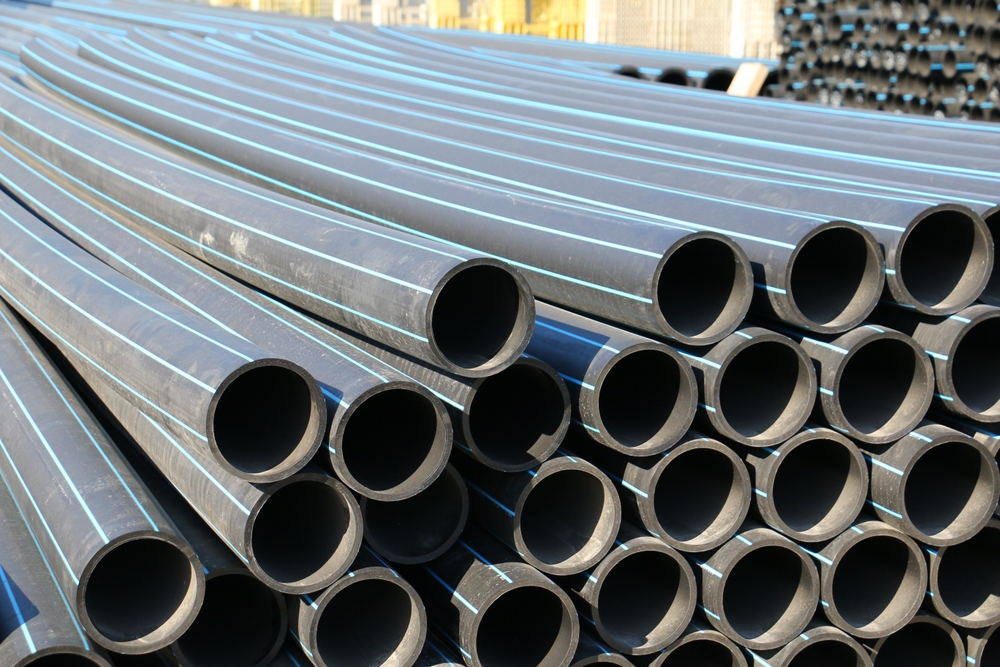1-All the powerful aspects of hot rolled pipes and their remarkable features
Introduction to Hot Rolled Pipes
Hot-rolled pipes are an essential component in a wide range of industrial applications. They are manufactured by passing heated steel through rollers to form seamless pipes with precise dimensions and a uniform thickness. The hot rolling process imparts key properties like high strength and workability. Let’s examine hot rolled pipes’ various types, sizes, functions, and advantages.
Overview of the Hot Rolling Process
In the hot rolling process, steel billets are heated to over 1700°F, which is above the recrystallization temperature of steel. The billets are then passed through successive rolling stands that have grooved rollers. The pressure and shaping applied by the rollers reduce the thickness of the billets and form the steel into continuous pipes up to 12 meters long.
Key Characteristics and Advantages
Hot rolling imparts beneficial properties like improved strength, consistent thickness, and a smooth surface finish. Seamless hot rolled pipes have higher pressure ratings compared to other joining methods. The hot-rolled structure also makes the pipes suitable for extensive fabrication and welding.
> Types of Hot Rolled Pipes
Hot rolled pipes can be categorized based on their joining method and shape:
Seamless Pipes
Seamless pipes do not have a welded seam and are manufactured as a single uniform piece of steel. This makes them ideal for high-pressure applications, fluctuating temperatures, and severe environments.
Welded Pipes
Welded pipes are made by rolling steel strips that are then welded together longitudinally or helically to form pipes. They have a welded joint and are suitable for low to medium-pressure applications.
Round Pipes
Round pipes have a circular cross-section and are one of the most common hot-rolled pipe shapes thanks to their versatility and structural stability.
Square Pipes
Square pipes have a square cross-section optimized for structures, machinery, and other applications where higher strength is required compared to round pipes.
Rectangular Pipes
Rectangular hot rolled pipes are used where taller profiles with stronger lateral stiffness are needed, such as structural columns and beams.
Coated Pipes
Coated pipes have a protective layer of epoxy, polyethylene, or other polymers that provide corrosion resistance and prevent oxidation at high temperatures.
2 -Sizes of Hot Rolled Pipes
Hot-rolled pipes are produced in a wide range of standard sizes:
Nominal Pipe Size (NPS) Range
Hot rolled pipes come in NPS sizes ranging from 1/2″ to 30″, which indicates the approximate inner diameter. Common sizes are 1/2″, 3/4″, 1″, 2″, 4″, 8″, etc.

Outside Diameter (OD) Range
The actual outside diameter ranges from 0.84″ to 30″, slightly larger than the NPS size. OD determines the space needed for installation.
Wall Thickness Range
The wall thickness typically varies between 0.109″ to 2.5″ depending on the pipe dimensions, pressure ratings, and applications.
Custom Sizing
In addition to standard sizes, hot rolled pipes can be customized in length, diameter, and thickness to meet application requirements.
3-Functions of Hot Rolled Pipes
Thanks to their high strength, temperature resistance, and workability, hot-rolled pipes serve diverse functions across industries:
Transporting Fluids
A major application is piping systems transporting liquids, gases, steam, or slurry between locations, such as in oil refineries.
Structural Support
Hot-rolled pipes are used as columns, beams, and bracing in building and bridge frameworks that require high loading capacity.
Machinery and Equipment
The pipes manufacture machinery parts, enclosures, cranes, conveyors, and heavy equipment.
Heat Transfer
Within heating and cooling systems, the pipes circulate fluids to transfer thermal energy between source and destination.
Pressure Vessels
Seamless hot rolled pipes make ideal pressure vessels and boilers that safely contain high-pressure fluids.
Automotive Uses
Automotive applications include exhaust systems, structural frames, fuel lines, roll cages, and transmission components.
4- Main Applications of Hot Rolled Pipes
Some major industries using hot rolled pipes include:
Oil and Gas Industry
Transmission pipelines, drilling equipment, well casings, and associated infrastructure for fossil fuel extraction and transport.
Construction Industry
Load-bearing structures, scaffolding, cranes, temporary bridges, and other equipment needed for construction projects.
Manufacturing Industry
Conveyors, reactors, boilers, furnaces, process equipment, machine parts, and numerous components involved in manufacturing.
Automotive Industry
Exhaust systems, fuel lines, roll cages, frames, axles, driveshafts, and structural components are commonly fabricated from hot-rolled pipes.
Aerospace Industry
Hydraulic systems, engine mounts, structural supports, and components like landing gear and wings utilize hot-rolled steel tubing.
5- Rust Resistance of Hot Rolled Pipes
Steel Composition and Rust
Hot rolled steel contains iron which can rust when exposed to moisture and oxygen. Rusting speed depends on environmental factors and the steel grade used.
Protective Coatings Against Rust
Pipes are usually coated with paint, zinc, epoxy, or other polymers to prevent surface corrosion. However, coatings can deteriorate over time.
Importance of Maintenance
Regular inspection and prompt treatment of any visible rust or coating damage is essential to extend service life and prevent failure, especially for critical applications.
6-Advantages of Hot Rolled Pipes
Hot rolling imparts many beneficial properties:
Strength and Durability
The hot rolled structure enhances steel’s strength and hardness to withstand high loads and pressures without failure.
Versatility
Available in a broad range of shapes, sizes, and grades to suit the needs of diverse applications and industries.
Cost-Effectiveness
Higher production volumes make hot rolled pipes a cost-efficient choice, especially for large projects.
Wide Availability
Mass production by major suppliers ensures reliable availability and quick sourcing for projects with tight deadlines.
Weldability and Workability
The hot rolled grains allow for clean welding and extensive cold working/fabrication like bending and flaring without fracturing.
7-Categories of Hot Rolled Pipes
Hot rolled pipes fall into several classifications based on application and required properties:
Structural Pipes
Used in construction and infrastructure. Made from standard carbon steel grades with high yield strength.
Line Pipes
Stringent quality requirements for long-distance fluid transport lines in oil/gas pipelines.
Mechanical Pipes
Precision dimensions and properties for machining into mechanical parts and components.
Boiler Pipes
Require high-temperature corrosion and creep resistance for boilers and heat exchangers.
Hydraulic Pipes
Tight dimensional tolerances and optimized inner surface finish for fluid power systems.
8- Conclusion
In summary, hot rolling produces versatile, high-strength seamless steel pipes for a vast range of functions across major industries. Proper maintenance is key for longevity. Categorization helps match pipe specs to applications.
Applications of Hot Rolled Pipes
From skyscrapers to aircraft carriers, hot-rolled pipes form the backbone of our modern industrial infrastructure thanks to their unmatched combination of strength, workability, and cost-efficiency.
FAQs
Question 1: What is the difference between hot-rolled and cold-rolled pipes?
Hot rolled pipes are formed at high temperatures above the recrystallization point while cold rolled pipes are formed below this point. Hot rolling imparts higher strength while cold rolling increases precision and surface finish.
Question 2: What steel grades are used for hot-rolled pipes?
Common grades include low-carbon steel, carbon manganese steel, micro-alloyed steel, alloy steel, and stainless steel. Selection depends on required mechanical properties, corrosion resistance, and high-temperature strength.
Question 3: What are common coating materials applied to hot rolled pipes?
Zinc, epoxy, polyethylene, coal tar, fusion-bonded epoxy, and liquid paints are commonly used coatings. Each has specific temperature, chemical, and abrasion resistance properties.
Question 4: How are hot rolled pipes joined together in the field?
Welding is the most common joining method. Depending on pressure ratings and operating conditions, flanges, threaded couplings, and grooved couplings are also used to connect pipe sections.

We have the best quality steel pipes. and we hope you have the best experience if you take our products.
© 2024 Mehboob Steel Traders. All rights reserved.
